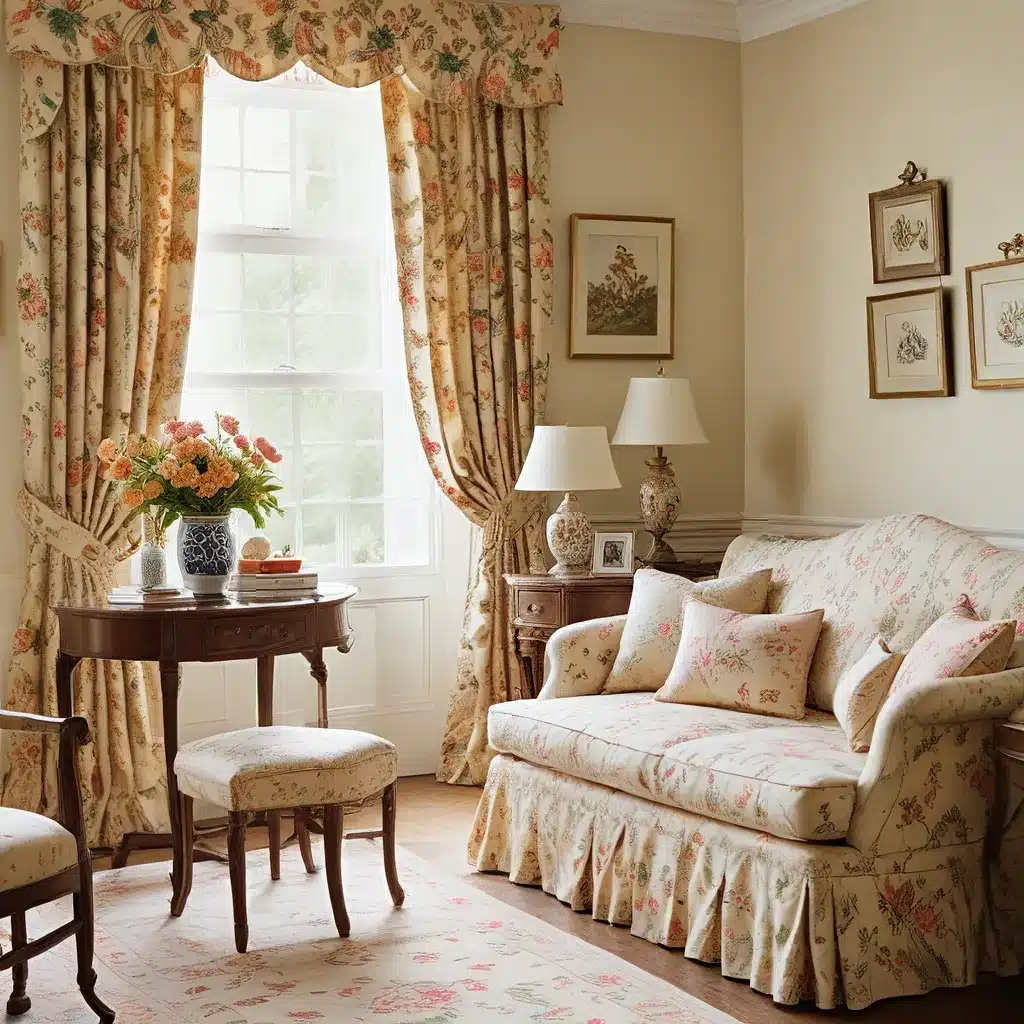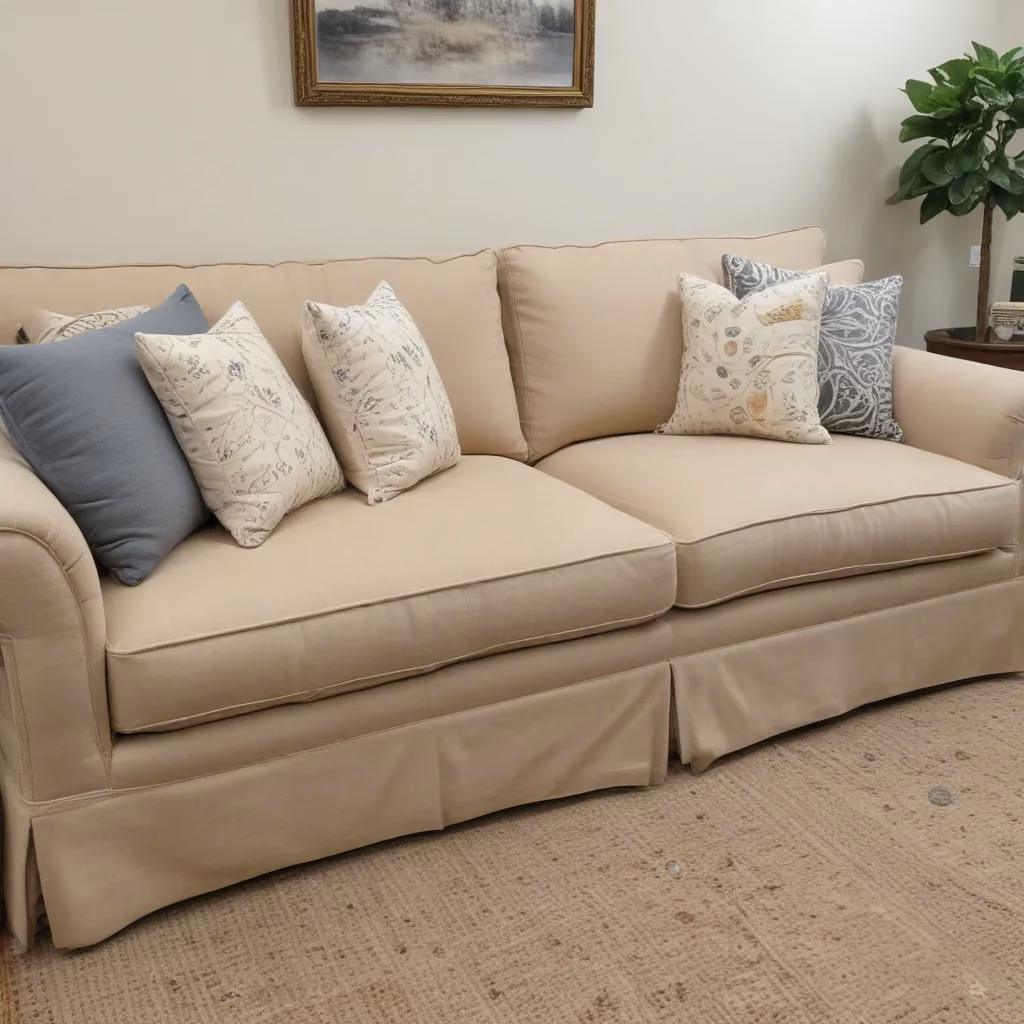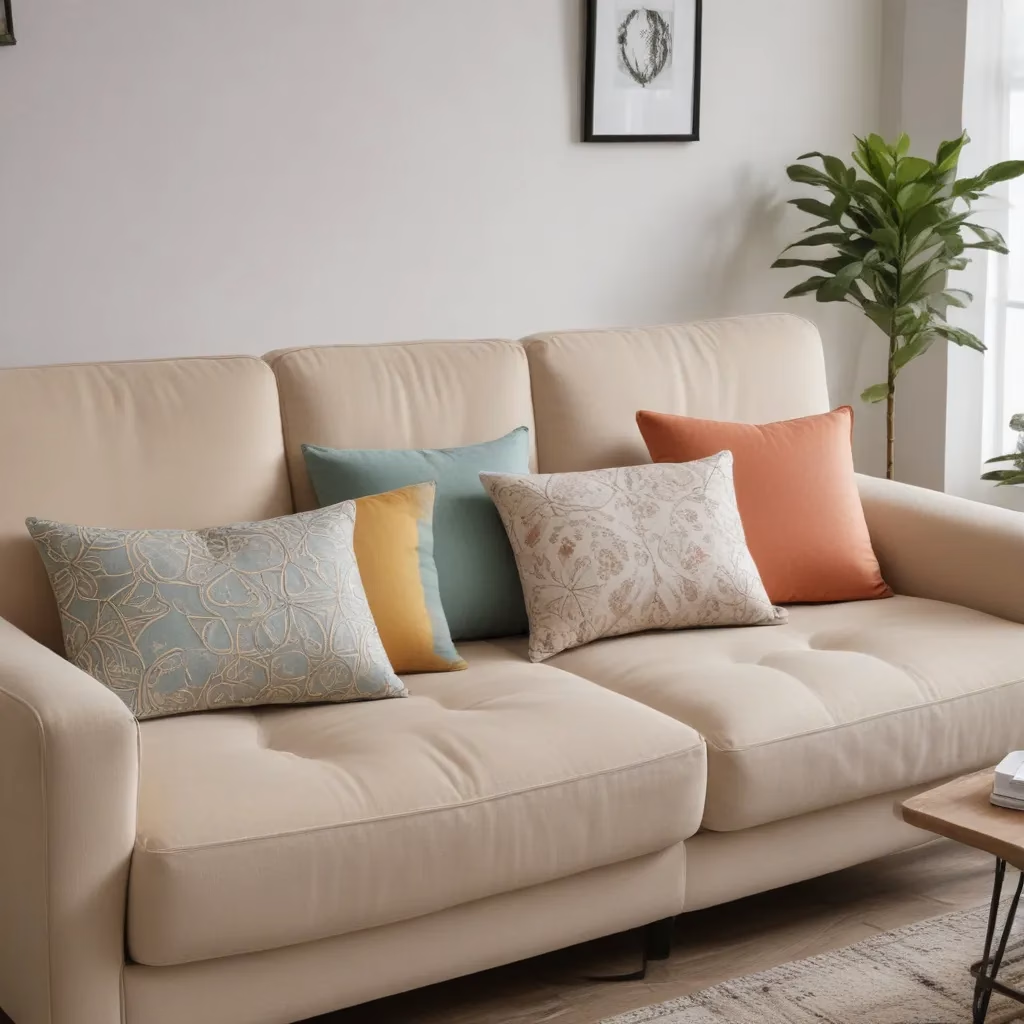
As I stroll through the warm, sun-dappled rooms of my cozy cottage, the chintz fabrics adorning the plush sofas and armchairs immediately capture my heart. Their intricate, floral patterns seem to whisper tales of bygone eras, evoking a sense of timeless elegance and irresistible comfort. It’s a design aesthetic that has endured for centuries, and for good reason – the English Cottage style, with its gingham, plaid, and chintz accents, has a way of turning any space into a haven of tranquility and charm.
You see, I’ve always been drawn to the cozy charm of these classic patterns, the way they seamlessly blend tradition with modern sensibilities. As I’ve delved deeper into the history and evolution of English Cottage design, I’ve discovered a rich tapestry of influences and inspirations that have molded this beloved aesthetic. From the florals that evoke the lush gardens of the countryside to the gingham and plaid that add a touch of rustic warmth, each pattern has a story to tell.
Floral Flourishes: Bringing the Garden Indoors
Floral patterns, with their delicate, intricate designs, have long been a hallmark of the English Cottage style. These vibrant, nature-inspired motifs have a way of infusing any space with a sense of vitality and elegance, creating a seamless connection between the indoors and the great outdoors. Whether it’s a wallpaper adorned with cascading blooms, or a plush chintz armchair that seems to bloom with each passing day, these patterns have a way of capturing the essence of a verdant garden.
But the beauty of floral patterns in English Cottage decor goes beyond their visual allure. They also possess a remarkable ability to evoke a sense of warmth, comfort, and nostalgia – qualities that are essential to the very heart of this design aesthetic. By incorporating these florals into our homes, we’re not just decorating; we’re creating a sanctuary that feels like a cozy countryside retreat, where the soothing embrace of nature is ever-present.
The Charm of Gingham and Plaid
Alongside the captivating florals, gingham and plaid patterns have long been integral to the English Cottage style. Gingham, with its classic checkered design, brings a cheerful, rustic charm to any space, while plaid – with its intersecting lines and warm color palettes – adds a touch of timeless sophistication.
These patterns aren’t just visually appealing; they also possess a remarkable ability to create a sense of coziness and tradition. When I sink into an overstuffed armchair upholstered in a soft gingham fabric, or wrap myself in a cozy plaid throw, I’m instantly transported to a world of bygone eras, where simple pleasures and homespun comforts reigned supreme.
It’s no wonder, then, that gingham and plaid have become such beloved staples in the English Cottage design arsenal. They offer a versatility that allows them to seamlessly blend with other elements, from the delicate florals to the weathered wood and natural textures that are so integral to this aesthetic.
Chintz: The Epitome of Elegant Charm
But the true crown jewel of the English Cottage style, in my humble opinion, is the chintz fabric. With its glossy, slightly glazed finish and intricate, floral patterns, chintz oozes a timeless elegance that is simply unparalleled. Whether it’s adorning the cushions of a beloved sofa or gracing the curtains of a sun-drenched window, this fabric has a way of elevating any space with its sophisticated charm.
What I love most about chintz is the way it seamlessly blends the old and the new, the traditional and the modern. It’s a fabric that has transcended eras, with its roots tracing back to 17th-century India and its enduring popularity in the world of interior design. And yet, in the hands of a skilled designer, chintz can be reinterpreted and reinvented to fit the needs of a contemporary home, creating a harmonious fusion of past and present.
Mixing Patterns with Finesse
Of course, the true art of English Cottage style lies in the way we weave these classic patterns together, creating a harmonious and visually captivating tapestry. It’s a delicate dance, to be sure, but with a little creativity and a keen eye for balance, the rewards are truly breathtaking.
When it comes to mixing patterns, the key is to pay close attention to scale and color. Start with a bold, large-scale floral as your foundation, then layer in smaller-scale gingham and plaid accents to add depth and visual interest. And don’t be afraid to experiment with unexpected color combinations – the English Cottage style thrives on the unexpected, where soft pastels and vibrant hues coexist in perfect harmony.
Bringing the Cottage Home
As I look around my own Sofa Spectacular cottage-inspired oasis, I can’t help but feel a sense of pure contentment. The chintz sofas, the gingham curtains, the plaid throw pillows – they all come together to create a space that is not just beautiful, but truly comforting. It’s a haven where the weight of the world melts away, replaced by a sense of timeless elegance and a deep connection to the natural world.
And that, my friends, is the true magic of the English Cottage style. It’s not just about the patterns or the fabrics; it’s about creating a space that nourishes the soul, a place where the comforts of the past and the sensibilities of the present seamlessly coexist. So whether you’re drawn to the delicate florals or the cozy gingham, I encourage you to explore the world of Sofa Spectacular and discover the endless possibilities of this enduring design aesthetic. After all, who doesn’t love a little chintz charm in their life?



